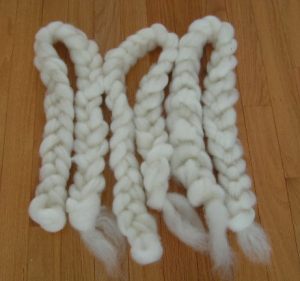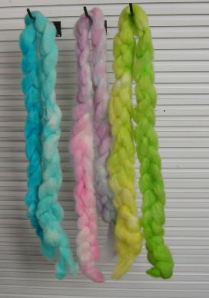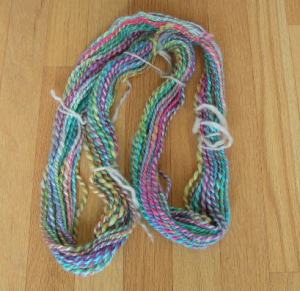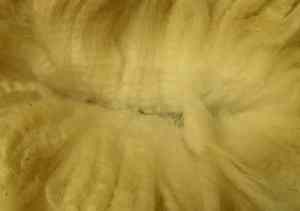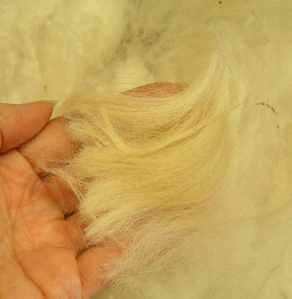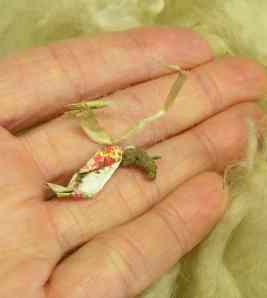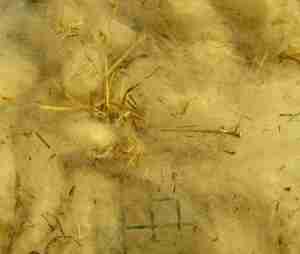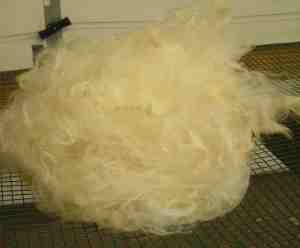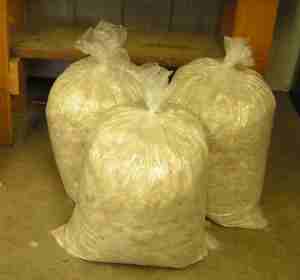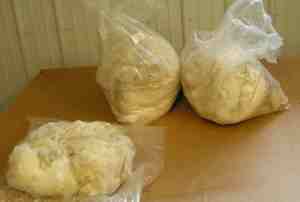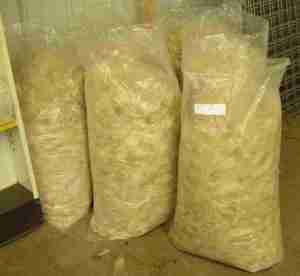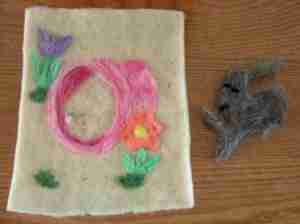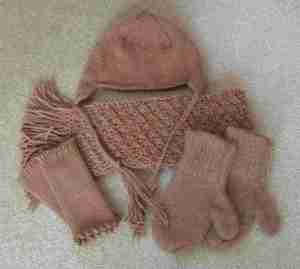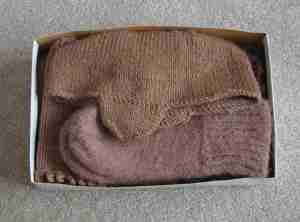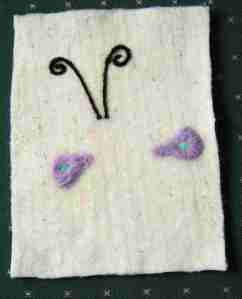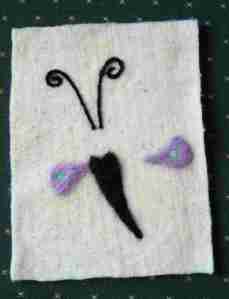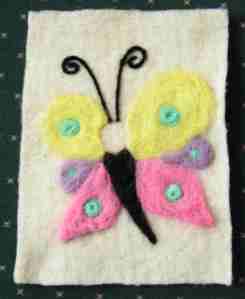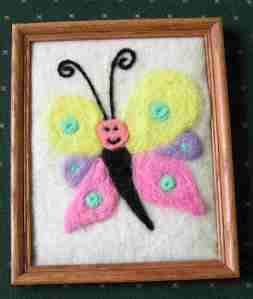In my post on my first attempt at dyeing alpaca roving, I mentioned a tip from a friend. Here it is:

Secret weapon
What is that in my pan? It is that rubbery kind of shelf liner. Here’s how I used it.
Again, I made finger chains of the roving.

Chained roving
I put them on the shelf liner, rolled it up jelly-roll style and soaked it in the citric acid water. By having the mushy roving stablized by the shelf liner, I was able to squeeze out more of the excess water and squirt on more dye.
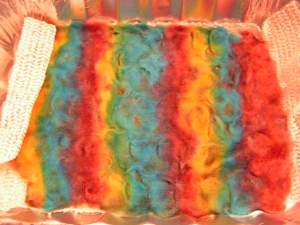
Chains with dye
The chains are laying hortizontal in the photo, so the dye is striped across. I used my roaster for heating the fiber and I was much less worried about scorching the roving than when I used the oven. Plus, my roaster is dedicated to dyeing. Oven is out, roaster is in!

Topside
After being heated and allowed to cool, I rolled the fiber and shelf liner back into the jelly roll and rinsed the fiber. Again, the shelf liner really helped hold the fiber together.

Bottom side
The colors pooled together some on the bottom and created some brown dye. At first I thought this was a bad thing, but it gives a whole different color dimension to the yarn. I think it is a good thing when I can see the future!

Chains
The three chains separated easily for drying.
Then I tried another idea.

coiled roving
I took a bunch of the coiled roving and rolled it up in the shelf line without chaining it.
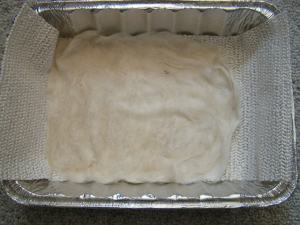
Coiled roving
I wanted to see if it would be stable with just the shelf liner and not the effect of chaining.

Dye on
Again, I striped on the dye and cooked it in my roaster. (clothes pins on the pan held the shelf line in place and made it easy to pick up the pan)

Bottom of coil
The coil was thicker than the chains and the dye didn’t quite make it to the bottom. I’ve been very cautious about poking the roving too much or trying to turn it over to see the bottom.
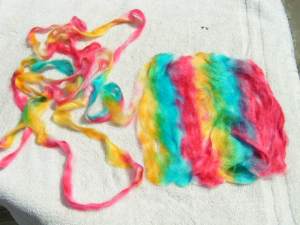
Unwrapping the dyed coil
The coiled roving after rinsing was still easy to unwrap. My dilemna with dyeing the coiled roving is that I would either have to stuff the roving in a bag for sale or roll it into a ball. I’m not sure if either of those choices is as good as having the roving already chained into a braid that is easy to show off.
I feel the dyeing of the roving is pretty successful. It doesn’t seem to have felted. But the true test will come in the spinning! I will share that with you another day.
Have you tried dyeing roving? What are your secrets for success?

